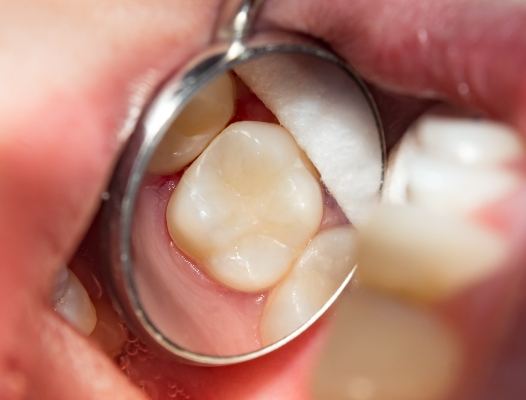Tooth-Colored Fillings – DuPont, WA
Treat Cavities with Lifelike Fillings

Here at DuPont Family Dentistry, we take the health and appearance of your smile very seriously. That is why we do not use metal fillings anymore. Instead, we prefer fillings that are tooth-colored and metal-free so you can enjoy the look of your smile while you benefit from renewed oral health. In addition to giving you a more natural look, tooth-colored fillings in DuPont, WA is also far less sensitive to hot and cold temperatures and is more conservative. This means that more of your natural tooth structure is preserved, making the tooth stronger and healthier.
Why Choose DuPont Family Dentistry for Tooth-Colored Fillings?
- Highly Lifelike, Durable Restorations
- Team of Skilled, Experienced Dentists
- Early Appointments Available
How Does a Cavity Happen?

We trust that you brush your teeth twice a day and floss at least once a day, but sometimes that just is not enough. There are millions of bacteria in your mouth surviving on the food particles that are still in your mouth and on your teeth after you have eaten. In a way, these bacteria feast on leftovers and excrete acids that can begin to wear down spots of enamel. Fluoride toothpaste can remineralize your teeth, but if enamel erosion happens quicker than the process of remineralization, then you will likely end up with a cavity.
What is a
Tooth-Colored Filling?

Tooth-colored fillings, also called light-curing resin composites, were first used in dentistry during the 1970s. Today, they are almost exclusively used to repair tooth decay. Over the years, the materials used have become more reliable, so a tooth-colored filling is just as strong as a metal filling of yesteryear. Moreover, a filling made of composite resin offers other advantages, as well.
First of all, the composite resin material can be closely matched to the natural color of the tooth that needs repair. Only you and your dentist will ever know that you have had a dental filling in DuPont.
Secondly, metal fillings are merely wedged into the hollowed-out space that the dentist creates as decay is removed. In this way, the edges of the filling material can allow leakage, which may eventually weaken the tooth and cause cracking. Composite resin, on the other hand, bonds to your tooth, therefore reducing the incidences of leakage and cracking around the filling.
How Should I Care for a Tooth-Colored Filling?

Caring for your restored tooth is the same as caring for your natural teeth. Be sure to brush with fluoride toothpaste at least twice every day and floss once a day. Just like natural tooth structure, composite resin may crack with repeated pressure from chewing hard objects or teeth grinding and clenching. With proper oral hygiene and regular checkups, you can expect your restoration to last for years and years.
